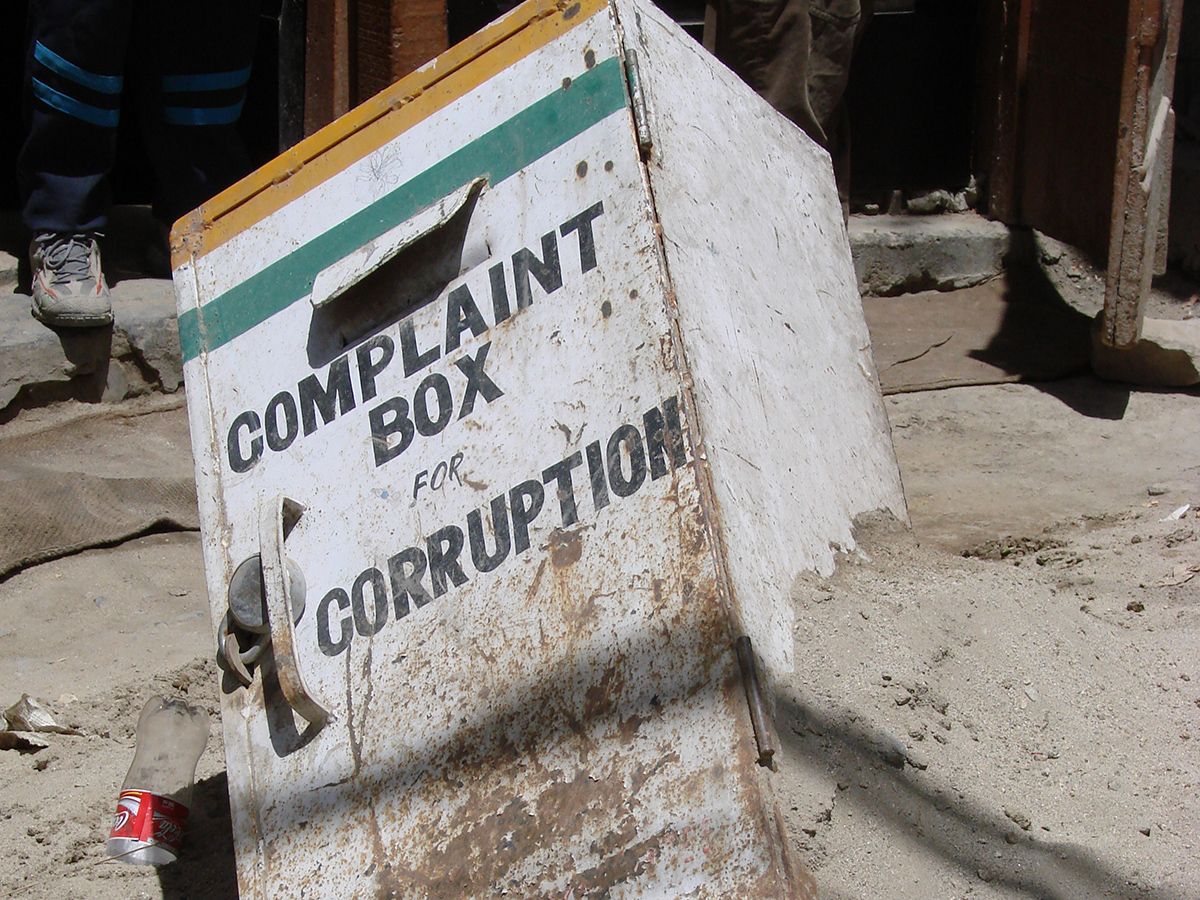Preventing corruption in an increasingly complex world
MPP alum and UNODC Consultant on Anti-Corruption, Anne Lim, sets out the increasingly complex challenges faced by those combatting corruption.

Every 9 December for the past two decades the world has marked International Anti-Corruption Day. Designated as such by the United Nations General Assembly, the most recent anniversary also marked the 20th year of the United Nations Convention against Corruption (UNCAC), the only legally binding universal anti-corruption instrument with a record-breaking 190 state parties.
Progress to combat corruption continues to gain global traction, spurring collaborative efforts between civil society, the private sector, governments and international organisations. High-profile corruption cases, including historical ones, have resulted in successful prosecutions. Calls to tackle corruption now ring far and wide across society, with increasing academic scholarship on corruption carried out by some of the world’s brightest minds – including through the Blavatnik School of Government’s Chandler Sessions on Integrity and Corruption, meeting this week in Oxford to continue work on a new set of strategies to entrench public integrity.
But while there is much to celebrate, corruption risks remain high in a less peaceful world
The 2023 Global Peace Index reveals a deterioration in the average level of global peacefulness, with an acceleration in regional and global conflicts, civil unrest and political instability. Not only are conflict deaths at the highest point this century, but the global number of refugees and internally displaced people is continuing to rise, straining government resources and generating further policy debates on migration.
Given that corruption can thrive in fragile and transitional contexts, the risks of corruption are exacerbated in regions that continue to undergo destabilisation. Weak institutions, warfare, humanitarian crises, poor governance and an inability to maintain public law and order all contribute to the ideal breeding ground for corruption. Technical solutions to prevent corruption alone are insufficient, particularly in post-conflict situations where corruption may have proliferated during wartime.
The face of corruption grows increasingly complex…
While one may commonly perceive corruption to be the misbehaving politician or the wads of cash provided to a public servant in exchange for a favour, corruption has evolved to be far more complex and sinister. Amidst developments in technology, corrupt acts may take root differently along procedural chains and processes, such as in the procurement of goods and services. Compounded by more sophisticated technology, illicit financial flows may be difficult to track and investigate. The proliferation of cryptocurrency and crypto assets remain areas which require extensive study, and the understanding of such new technology remains uneven across states.
In some instances, corruption is intertwined with different types of crime, such as the trafficking of drugs, humans and wildlife. Such is the case of scam centres that have been operating on an industrial level in Southeast Asia, resulting in hundreds of thousands of victims. Recently published typologies of crime have indicated that there are least 10 key different types of crime linked to corruption, including ‘crimes that affect the environment’ and ‘trafficking in cultural property’.
…and ‘corruption culture’ remains difficult to change
In 2023, a study found that approximately a quarter of Europeans surveyed think it is acceptable to give a gift or do a favour to get something from a public service. More than half think that corruption is part of the ‘business culture’ in their country. This demonstrates that the dividing line between corrupt behaviour and acceptable practice may not always be clear. States like Portugal have identified that there remain research gaps on the social and cultural factors that contribute to corruption and other forms of crime, with explicit identification of corruption in the corporate sector. While UNCAC has set out which corrupt acts are to be criminalised and prosecuted, implementation is often challenged by common ways of working which may be difficult to change.
Existing legislative gaps may reflect such challenges. For example, some states define the offence of ‘bribery’ to only include instances of material or financial advantages, while non-financial benefits are excluded. The offering of non-financial benefits may be perceived as a gesture of goodwill, not behaviour that should be criminalised. Some states focus on regulating corrupt behaviour in the public sector while leaving the private sector unaddressed, even when the private sector can often be a perpetrator of corrupt practices. Cases where Special Economic Zones have operated to provide avenues for corrupt practices are examples.
Addressing corruption should be a goal, not just the goal
It is important to remember that corrupt behaviour may present as the cause, symptom, and/or consequence of other policy challenges. To address corruption in one context, it is likely necessary that other equally pressing problems are addressed. In other words, corruption cannot always be addressed in isolation.
Some international initiatives which seek to address corruption do so in tandem with broader goals. For instance, the United Nations Sustainable Development Goals which call for global actions to end poverty and protect the planet specifically note the need to substantially reduce corruption and bribery. The Indo-Pacific Economic Framework for Prosperity, consisting of 40 per cent of the global GDP, addresses anti-corruption in one of its pillars – along with other pillars on trade, supply chains, and clean energy. Such international cooperative efforts that recognise the multi-disciplinary impacts of corruption are commendable, given that corruption has already been demonstrated to undermine clean energy projects in the green transition.
On a domestic level, the reduction and prevention of corrupt behaviour requires a multidisciplinary response, with an emphasis on enablers that may often be deemed too difficult to address. All corrupt behaviour stems from some form of motivation or desire, be it financial, political or something else. Recognising these deeper drivers – some of which may originate from dire circumstances of poverty and other societal pressures – can help policymakers identify what the real problems are and what can be done to address them. The challenge, then, is ensuring that buzzwords from corruption-prevention policies can be properly translated into tangible outcomes, particularly in a world that grows increasingly complex. Criminalising and prosecuting corrupt acts can only be part of the answer. As states differ in their capacities, needs and priorities, they will need to identify what gaps exist and how these can be remedied. Generating the political will to do so is the next step which will require its own separate piece.
Anne Lim is an MPP alumna and UNODC consultant from Malaysia with over 6 years of formal experience in the private and public sector. To learn more about Anne Lim, visit her profile on LinkedIn.

